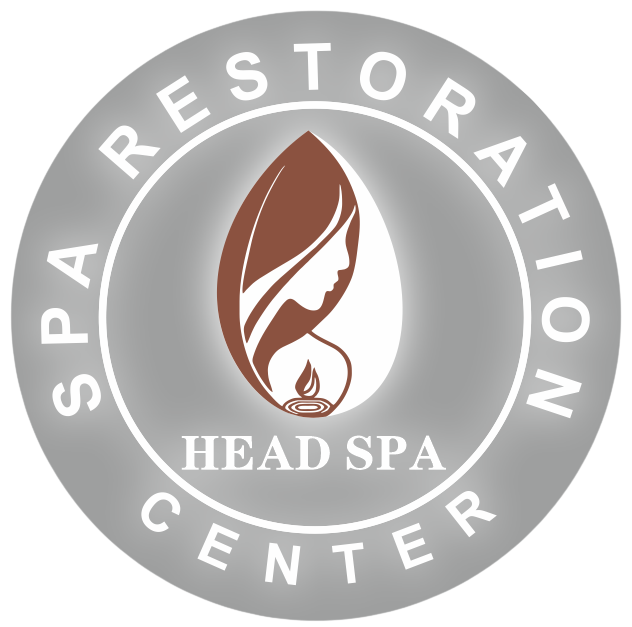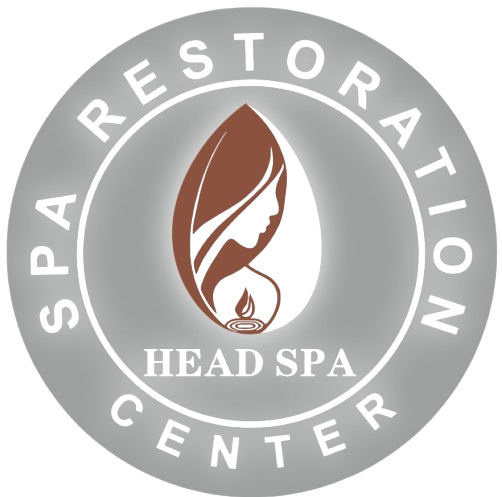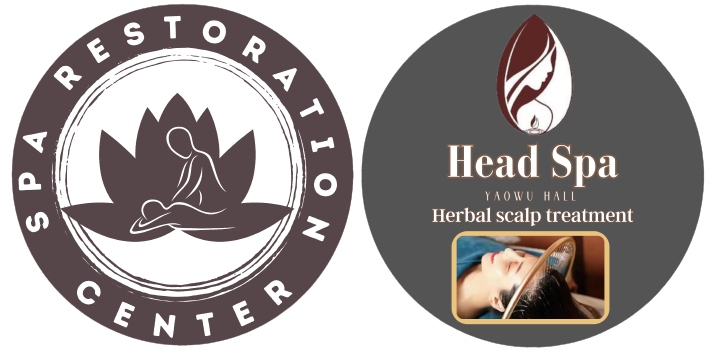
Difference Between Body Restoration Spa And Regular Spa
As the spa industry grows, it’s becoming trickier to understand the differences between various types of spas, especially since some categories overlap. However, it’s essential to recognize distinctions, such as those between a Body Restoration Spa and a Regular Spa, to make informed choices.
This article clarifies the disparities between these two spa types, helping readers navigate the diverse spa landscape with ease. Let’s dive in and explore!
Types Of Spa

There are many types of spa available. Here is the list below:
Day Spa
Offers a variety of spa treatments and services, typically without overnight accommodations. Clients visit for a few hours or a full day of relaxation and pampering.
Destination Spa
Provides comprehensive wellness programs in a resort-like setting. Guests stay overnight or for an extended period, participating in activities focused on health, fitness, and relaxation.
Resort Spa
Located within a resort or hotel, these spas offer a range of services to guests staying on the property. They often include amenities such as pools, fitness centers, and dining options.
Medical Spa
Combines traditional spa treatments with medical services supervised by licensed healthcare professionals. Services may include cosmetic procedures, dermatology treatments, and integrative medicine.
Wellness Spa
Focuses on holistic health and well-being, offering services aimed at promoting physical, mental, and emotional wellness. This may include yoga, meditation, nutritional counseling, and alternative therapies.
Thermal Spa
Utilizes natural thermal waters or mineral springs for therapeutic purposes. Guests can soak in hot springs, undergo hydrotherapy treatments, and experience the healing properties of mineral-rich waters.
Ayurvedic Spa
Based on traditional Indian medicine, Ayurvedic spas offer treatments and therapies aimed at balancing the body’s doshas (energies). Services may include massages, herbal treatments, and dietary recommendations.
Sports Spa
Catering to athletes and fitness enthusiasts, sports spas provide specialized treatments to support recovery, enhance performance, and prevent injuries. Services may include sports massage, cryotherapy, and personalized training programs.
Each type of spa offers unique experiences and benefits, catering to different preferences and wellness goals.
Spa Benefits For the Human Body
Spas offer a wide range of benefits for the human body, including:
Stress Reduction Spa
treatments such as massages, aromatherapy, and hydrotherapy can help reduce stress levels by promoting relaxation and releasing tension in the body.
Muscle Relaxation
Massages and heat therapies like sauna and hot tub sessions can help soothe sore muscles, improve circulation, and alleviate muscle stiffness and tension.
Improved Circulation Spa
treatments, particularly massage therapy, can enhance blood circulation throughout the body, promoting better oxygen and nutrient delivery to tissues and organs.
Pain Relief
Many spa therapies, including massage, hydrotherapy, and acupuncture, can provide natural pain relief for conditions such as chronic pain, arthritis, and muscle injuries.
Detoxification
Spa treatments like body wraps, exfoliation, and hydrotherapy can aid in detoxifying the body by eliminating toxins, reducing inflammation, and improving lymphatic drainage.
Skin Rejuvenation
Facials, body scrubs, and other skincare treatments offered at spas can help rejuvenate the skin, promote cell turnover, and improve overall skin health and appearance.
Improved Sleep Quality
Relaxing spa treatments can help promote better sleep by reducing stress and anxiety levels, calming the nervous system, and inducing a state of relaxation conducive to restful sleep.
Mental Well-Being
Spa visits can have positive effects on mental well-being by promoting relaxation, reducing anxiety and depression symptoms, and improving overall mood and emotional balance.
Enhanced Immunity
Some spa therapies, such as hydrotherapy and massage, have been shown to boost the immune system by stimulating circulation, reducing stress hormones, and promoting overall wellness.
Holistic Wellness
Spas offer holistic wellness experiences that nurture the mind, body, and spirit, providing opportunities for self-care, introspection, and personal growth.
Overall, regular visits to the spa can contribute to overall health and well-being, providing both physical and mental benefits for individuals seeking relaxation, rejuvenation, and self-care.
Difference Between A Body Restoration Spa And A Regular Spa That You Must Know

Before knowing the differences, let’s get to know the body restoration spa and regular spa basics individually.
Body Restoration spa
A Body Restoration Spa is a type of wellness facility that focuses on holistic approaches to rejuvenating the body, mind, and spirit. Unlike traditional spas that primarily offer relaxation-focused services, a Body Restoration Spa emphasizes therapeutic treatments aimed at restoring health, vitality, and balance.
Regular Spa
A regular spa, often referred to simply as a “spa,” is a facility that offers a variety of relaxation-focused treatments and services aimed at promoting physical and mental well-being. These spas typically provide a range of services designed to pamper and rejuvenate clients, without necessarily focusing on therapeutic or medical treatments.
Differences
The main differences between a Body Restoration Spa and a Regular Spa lie in their focus, approach, and the types of services they offer:
Focus and Purpose
Body Restoration Spa: Primarily focuses on holistic wellness and therapeutic treatments aimed at rejuvenating the body, mind, and spirit. The primary goal is to restore health, vitality, and balance through personalized care and specialized therapies.
Regular Spa: Emphasizes relaxation and pampering, offering a variety of treatments and services designed to promote physical and mental well-being without necessarily focusing on therapeutic or holistic approaches.
Types of Services
Body Restoration Spa: Offers therapeutic treatments such as deep tissue massage, acupuncture, chiropractic care, and hydrotherapy. These services are aimed at addressing specific health concerns, alleviating pain, and improving overall well-being.
Regular Spa: Provides relaxation-focused services such as massages, facials, body treatments, manicures, and pedicures. The emphasis is on pampering, rejuvenation, and enhancing the client’s physical appearance and relaxation experience.
Holistic Approach
Body Restoration Spa: Adopts a holistic approach to wellness, considering the interconnectedness of physical, emotional, and spiritual health. Treatments may incorporate elements of alternative medicine, nutrition, mindfulness, and energy work.
Regular Spa: While some regular spas may offer holistic treatments such as aromatherapy or meditation, the overall focus is primarily on providing luxurious and indulgent experiences for relaxation and beauty enhancement.
Personalization and Education
Body Restoration Spa: Often offers personalized wellness programs tailored to individual needs and goals. Additionally, educational workshops, seminars, and classes on topics such as nutrition, stress management, and holistic health practices may be available.
Regular Spa: While services can be customized to some extent, the level of personalization may not be as comprehensive as in a Body Restoration Spa. Educational offerings may be limited to skincare or beauty-related topics.
In summary, while both Body Restoration Spas and Regular Spas offer opportunities for relaxation and well-being, their focus, approach, and the types of services provided differ significantly. Body Restoration Spas prioritize holistic wellness and therapeutic treatments, whereas Regular Spas emphasize relaxation, pampering, and beauty enhancement.
What are proper spa levels?
In the context of the spa industry, “proper spa levels” may refer to different tiers or categories of spas based on their facilities, services, and overall quality. Here’s a general breakdown:
Basic/Entry-Level Spa
Basic spas typically offer standard services such as massages, facials, and basic body treatments.
- Facilities may include treatment rooms, relaxation areas, and basic amenities like showers and changing rooms.
- These spas often cater to budget-conscious clients and may offer introductory packages or discounted rates.
Mid-Range Spa
Mid-range spas offer a wider range of services and may include more specialized treatments such as hot stone massages, body wraps, and aromatherapy.
- Facilities are more extensive and may include additional amenities such as saunas, steam rooms, jacuzzis, and relaxation lounges.
- Service quality and ambiance are typically higher than basic spas, with more attention to detail and customer comfort.
High-End/Luxury Spa
- Luxury spas provide an upscale experience with top-of-the-line services, amenities, and facilities.
- Services may include advanced skincare treatments, exotic massages, personalized wellness programs, and exclusive rituals.
- Facilities often feature lavish amenities such as private treatment suites, hydrotherapy pools, meditation gardens, and gourmet dining options.
- The focus is on providing a luxurious and immersive spa experience, often with an emphasis on personalized service and attention to detail.
Medical Spa
- Medical spas combine traditional spa services with medical treatments supervised by licensed healthcare professionals.
- Services may include cosmetic procedures, laser treatments, injectables, and medical-grade skincare treatments.
- Facilities are equipped with advanced technology and medical equipment, and treatments are often tailored to address specific skin concerns or aesthetic goals.
Destination Spa
- Destination spas offer comprehensive wellness programs in a resort-like setting, typically with overnight accommodations.
- Services include a wide range of spa treatments, fitness activities, nutritional counseling, and educational workshops.
- The focus is on promoting holistic health and well-being through immersive experiences that address mind, body, and spirit.
These are general categorizations, and the specific features and offerings of spas may vary widely depending on factors such as location, clientele, and market demand.
How often should you get a full body scrub?
- Normal to Dry Skin: If your skin is normal to dry, aim for a full body scrub once every 1-2 weeks to remove dead skin cells and improve texture.
- Oily or Acne-Prone Skin: For oily or acne-prone skin, consider a weekly full body scrub to help unclog pores and control oil. But be careful not to overdo it, as it could worsen irritation.
- Sensitive Skin: If you have sensitive skin, go easy on the exfoliation. Stick to a full body scrub every 2-3 weeks to avoid redness and discomfort. Look for gentle formulas made for sensitive skin.
- Seasonal Changes: Adjust the frequency of body scrubs based on the season. During dry, winter months, you might benefit from more frequent exfoliation to combat dryness.
- Special Occasions: Before big events like weddings or vacations, a one-time full body scrub can give you smoother, glowing skin.
Conclusion
That is all about the Body restoration Spa and a Regular Spa differences. A Body Restoration Spa concentrates on overall well-being and healing treatments designed to restore health, energy, and balance in the body. On the other hand, a Regular Spa emphasizes relaxation and indulgent experiences without necessarily focusing on therapeutic or medical treatments.



Leave a comment